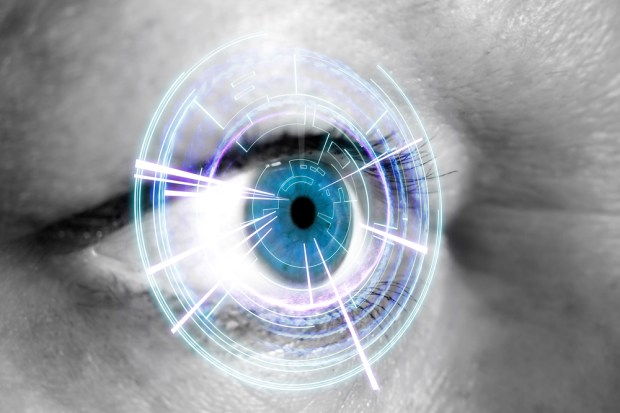Biometrics Embraced For Mobile Corporate Banking (Though Not Fully)

It’s an inescapable trend for banks: Corporate clients want to be able to have the same convenient ways of banking that they already have access to in their consumer lives. It’s placed pressure on FIs to roll out mobile-friendly banking platforms for the CFOs and corporate treasurers that use their services, and while offering these solutions is itself a challenge, it’s also given rise to additional hurdles.
Among the tallest is how to make mobile corporate banking services secure.
Industry players are beginning to turn to biometric authentication as a way to ensure enterprise-grade security on a mobile device, and one of the latest to do so is Comarch. The company offers IT business solutions to an array of clients, including banks, and has just announced a partnership with EyeVerify, integrating its Eyeprint ID biometric authentication technology into Comarch’s offerings to banks.
“Banks are looking to go digital, to upgrade their digital platforms and to make everything that you can do in a branch something you can do on the phone,” explained EyeVerify EVP of Global Sales and Marketing Chris Barnett in a recent interview with PYMNTS.
But, like any new disruptive technology, biometric authentication has its doubters and a long road ahead to becoming commonplace. Sylwia Hans, financial services director at Comarch, told PYMNTS that the technology is increasing in popularity, though, thanks to the convenience factor.
“It’s probably the most convenient way to authenticate,” she said — especially for corporate users. Executives don’t have to carry physical tokens or remember passwords. “You can always authenticate with what you already have,” the executive explained.
And sure enough, corporate banking clients are now demanding this type of convenience. EyeVerify’s Barnett placed it in the context of consumers making a purchase online. For a $0.99 buy, a consumer can easily use biometrics to approve of a transaction.
“If you’re a CFO of a company,” he said, “and you have to use something as outdated as a password, that just doesn’t make sense. You’re going to immediately demand of your IT team and vendors that it will at least be as sophisticated as an app store.”
Barnett also noted that convenience is an added perk of ensuring mobile banking is secure.
“While security is important for consumer banking, it’s extremely important for corporate banking,” he said. “An attack or compromise for a consumer is bad, but if you’re running any kind of business and your account is taken over, you can’t run your business. You can’t pay your vendors. You can’t pay your employees.”
Indeed, banking security is paramount for the enterprise. It’s one reason why biometric authentication isn’t yet the norm.
Hans emphasized that biometric authentication is complimentary to existing security measures and that the technology isn’t used for all types of banking activity — for example, she said, corporates probably won’t use it for payments authorization.
Skepticism doesn’t go unnoticed in the biometric authentication community, with stories of the technology being compromised by a hacker using a simple picture of someone’s face or a copy of someone’s fingerprint to gain access to a system. Barnett said these instances are rare, especially when compared against the breaches associated with the failure of passwords.
“Users pick insecure passwords,” he said. “They overshare, they get hacked, it happens everyday.”
Biometric authentication isn’t yet flawless, of course, but that hasn’t stopped banks like Wells Fargo, another partner of EyeVerify, from implementing the technology to secure mobile corporate banking platforms. Today, the tool can be used to supplement existing security measures or for access to less sensitive banking information. And while, among consumers, the technology may pick up a bit more quickly — scanning your eye to gain access to Facebook does seem pretty cool — banks, CFOs and corporate treasurers are going to demand the most stringent security and privacy standards before embracing it without question.
But as these professionals require more convenience and mobility with their banking services, banks’ embrace of biometric authentication thus far signals the security technology will likely continue to gain the trust of corporates.
